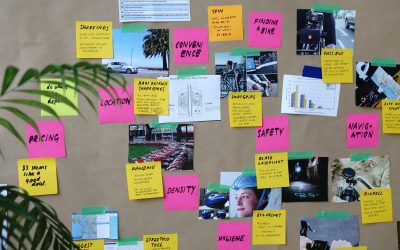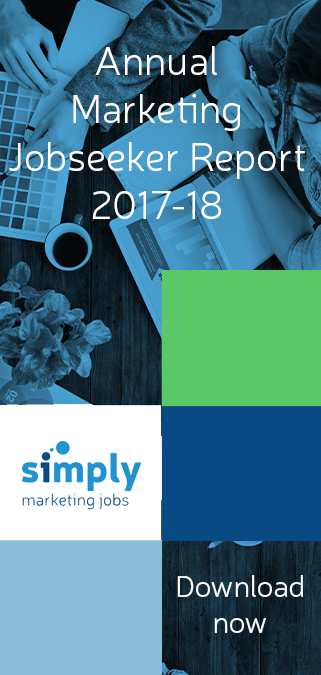Almost 50% of millennials believe that they will leave their current jobs within two years.
Does this mean that job-hopping isn’t just a myth?
Before we make any conclusion and label this generation lazy and unreliable, it’s important to inspect what makes them resign so easily.
A survey has shown that learning and development opportunities are what 42% of millennials hold in high regard when it comes to deciding where to work.
According to the same survey, only 42% of them say that their current employers provide such opportunities.
Only 28% of them plan to stay in the same job beyond five years.
The average turnover rate in the UK is around 15%, although these stats vary depending on the industry.
And it’s not just about the money.
Here’s how to break this pattern and facilitate learning in the workplace for your millennial employees.
Communicate the Purpose of the Training
Millennials are known for looking for the purpose and meaning in all things.
When it comes to the marketing industry, it means that they want to work for companies with which they share values.
For example, your millennial marketers won’t be comfortable with launching generic bulk email campaigns and the merciless spamming of prospects. You need to adopt modern, contemporary tactics that treat your prospects as unique individuals and leverage the latest tools which allow a high level of personalisation.
So, disruptive marketing is a big no-no if you want to capture your millennial employees’ attention and get them to listen to what you want to teach them.
They need a motive and a reason for learning particular skills, as that, will let them put these skills into a context and understand whether what they learn is relevant and applicable to real-life situations.
That’s why it’s important to define the objectives of your training and create goals for your millennial students to achieve.
Such an approach is great because it allows you to monitor their progress and understand whether they’re meeting these learning objectives. As a result, you’ll be able to focus on the topics that are more challenging while you can go through the familiar ones faster, thus personalizing their learning experience.
Make Learning Fun and Flexible
Stressful, information-packed classes and training sessions are a thing of the past.
Millennials want their learning experience to be fun and laid back.
The point is to turn it into something that they’ll look forward to and not roll their eyes at the thought of.
If we take into consideration that their attention spans have grown shorter as the amount of the information they consume on a daily basis has been growing exponentially – 10 years ago it was estimated that the human brain was loaded with 34GB of information every day, it’s clear that you can’t expect them to be focused on tedious and long-drawn-out training sessions.
It’s crucial to include a wide range of different activities which will keep them focused.
Move away from traditional chunky and blocky courses to a microlearning, bite-sized formats, and divide your hour-long lessons into minute-long modules that are easy to digest.
Leverage Various Types of Content
Video is particularly effective for keeping millennials (and not just them) engaged.
Generally speaking, this type of content is preferred by many learners which is nothing strange if we remember that the human brain processes images and visual content 60,000 times faster than text.
So, by providing millennial employees with data presented through infographics and videos, you’re ensuring that they won’t find it boring. Remember that they’re fond of such formats and that they use them in their marketing campaigns. You can’t expect to show them how to cut through the marketing noise and understand what works if you’re using obsolete teaching methods.
And you can be sure that they will be picky, as millennial marketers are the first true inbound marketing natives, and they won’t have your traditional textual approach to education.
Simulations are another particularly valuable vehicle for conveying practical and useful knowledge to Gen Y. This way they’ll be able to demonstrate their skills and the knowledge they have acquired during the training.
By recording these courses and uploading them online, you can additionally engage millennials and allow them to learn at their own pace.
Tap Into Technology
Millennials are the first digital generation, and that’s something that you shouldn’t forget.
Technology plays an important part in their lives, and it’s only logical to use different tech solutions in your lectures to streamline the learning process.
While PowerPoint presentations might be the pinnacle of a modern teaching approach from the point of view of Gen Xers, for every millennial, these are a definition of a snoozefest, especially if the person in question is a marketer.
Jazz them up embedding your questions into your slides and allowing your millennial students to answer from their tablets or laptops.
Building custom apps tailored to the educational needs of your employees and company, and which can be used for different learning tasks, is a great method for keeping millennials interested and involved in the process.
For example, gamification software can do wonders for reaching your training goals.
Ensure Interactivity
Lecturers and trainers who hold the floor and allow only a brief Q&A session at the end of the presentation aren’t the best choice for a millennial audience.
Millennial marketers who have been using all kinds of real-time communication channels such as Facebook Messenger, Viber, and WhatsApp throughout their lives and are in constant communication with their friends and family expect a more interactive approach. And it’s only logical that they will use these on their job.
So, instead of talking their ears off, make your training sessions more engaging by asking them questions and encouraging them to express their opinions.
Open-ended questions are great for sparking discussions and getting your millennial employees to participate and share their input.
These 4 methods can help you create ideal learning environments for millennials, thus stimulating them to engage more and make the most of your employee training.
Michael Deane is one of the editors of Qeedle, a small business magazine. When not blogging (or working), he can usually be spotted on the track, doing his laps, or with his nose deep in the latest John Grisham.
The ultimate marketing job interview guide
When recruiting for marketing roles the interview panel will, first and foremost, be looking for strong communication skills and a quick, inventive mind
Ten ways to improve your marketing CV
It goes without saying that a brilliant CV will be your ticket to an interview and your dream marketing job. All the advice from job-hunting experts says spend plenty of time getting your resume right. Don’t be sloppy, and in the ever-competitive world of marketing, try as hard as you can to make yourself stand out from the crowd.
Five tips for complying with the new EU Cookie Law
EMEA marketers are scratching their heads, wondering how to go about compliance with the EU Privacy Directive that officially became law in the United Kingdom on 25 May 2012. The directive mandates that all companies marketing into the UK obtain consent from website visitors in order to store and retrieve usage information from their computers.
Shell leads FTSE 100 in digital marketing
Shell has landed the top spot in a survey of the UK’s most digitally connected corporate brands in the FTSE 100. For marketing professionals, Shell’s digital marketing strategy can be used as a benchmark for good practice in the industry, say experts. Other high-scoring brands include Kingfisher, SABMiller, Aviva, and Unilever so observing how they use the various channels for digital marketing will be helpful to marketers.
Five ways to stay motivated during your marketing job search
We all begin to feel frustrated when the search for a new job drags on. It’s worth remembering that very few people are successful with every job application they make. The trick for marketing professionals in today’s tough economic climate is to try and learn something from each failed job application, take it on the chin, and move on. Here are five tips on how to stick with it, as you search for your perfect marketing role:
Why your next marketing recruit should have creativity at their heart
It is the yin and yang of marketing. One of the raging debates in the field is that of the relative importance of the big-ideas creative versus the data analyst and technician. Which is more important? The ideas and content creator, or the...








